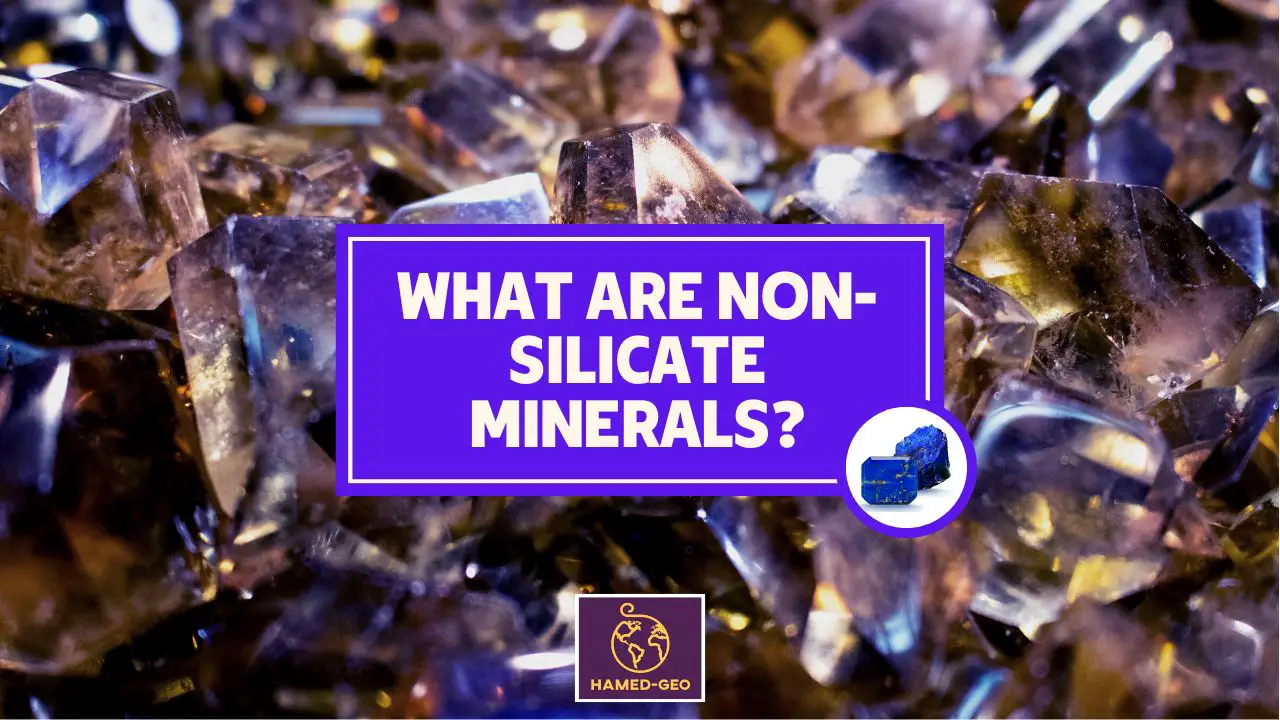Non-silicate minerals definition
Non-silicate minerals are minerals that do not contain the silicate tetrahedral building blocks found in silicate minerals. Instead, non-silicate minerals are composed of other chemical elements or compounds. Non-silicate minerals are classified into several groups based on their chemical composition, including carbonates, sulfates, halides, oxides, sulfides, phosphates, hydroxides, and native elements.
Non-silicate mineral groups
Carbonates
The two most common carbonate minerals are calcite (CaCO3) and dolomite (CaMg(CO3)2), both of which are found in sedimentary rocks like limestone and dolostone. Calcite and dolomite are two examples of carbonate rocks that develop when water evaporates and then refreezes. Carbonate-rich rocks, such as limestone, are often formed by the lithification of marine animals that have since been fossilized. The majority of these species, both visible and invisible, have calcium carbonate shells or exoskeletons (CaCO3). The dead bodies of these animals sink to the bottom of their aquatic habitat, where the soft components of the bodies disintegrate and eventually dissolve. Limestone is a sedimentary rock that forms when a hard calcium carbonate component is buried behind layers of softer sediments. While massive, easily seen fossils can be found in some types of limestone, the vast majority of limestones are really made up of the fossilized remains of tiny organisms.
Calcite crystals exhibit a fascinating feature known as birefringence, which causes light to split into two wave components that vibrate at right angles to one another. Light waves moving at different speeds are refracted into two distinct directions when they pass through a crystal. What this means is that whatever you look at through the crystal will appear twice as large. Calcite crystals are employed in petrographic microscopes, which examine minerals and rocks with the use of polarized light.
Salts are a common name for several minerals that aren’t silicates. What we mean by salts here are chemicals formed by exchanging hydrogen in organic acids for another element. Carbonic acid, which is formed when carbon dioxide is dissolved in water, is the most common natural acid. Carbonate minerals, salts based on the carbonate ion (CO3-2), are formed when calcium and/or magnesium are added to the carbonic acid in lieu of hydrogen (H2CO3). Organisms create calcite and its related polymorph aragonite to construct shells and physical structures like corals. Bicarbonate ions (HCO3-) in seawater provide a source of both calcium and carbonate for many marine organisms. Calcite, as will be seen in the mineral identification section below, effervesces in dilute hydrochloric acid because it dissolves so readily in acid (HCl). To aid in mineral identification, geologists frequently bring and utilize small dropper vials of diluted hydrochloric acid.
In addition to gypsum, the gypsum crystal also contains water molecules. Evaporation may produce a variety of minerals, including the salts known as evaporite.
Halides
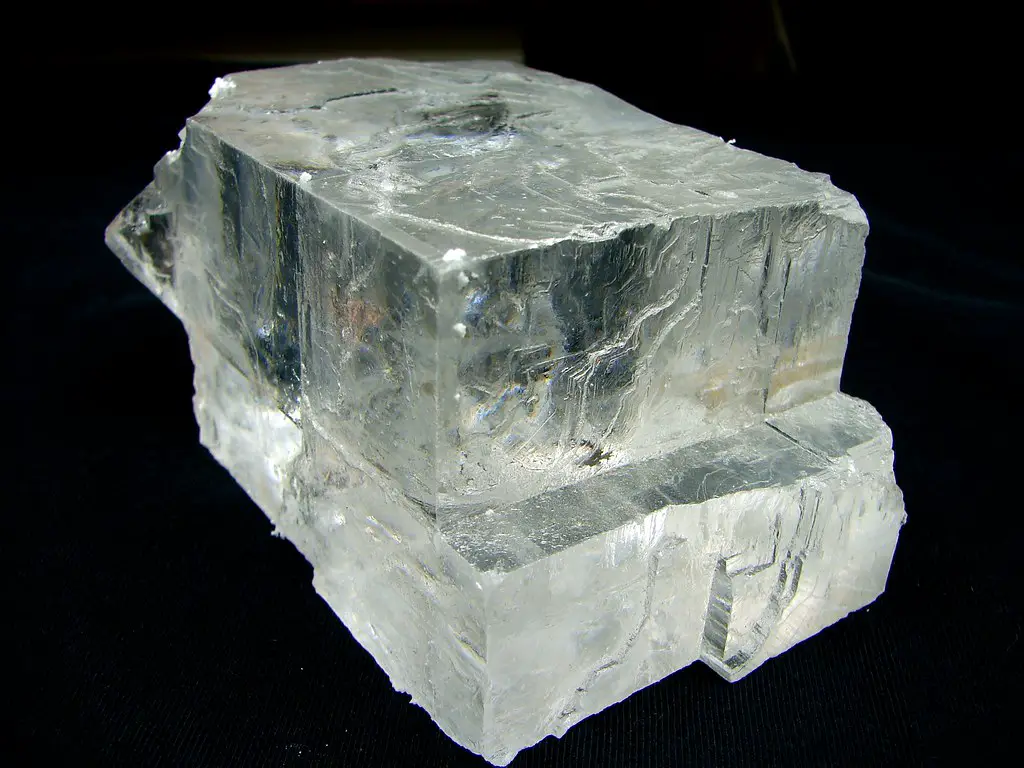
Column VII halogens, often fluorine or chlorine, form ionic bonds with sodium or other cations to form the halides. Common salt, or halite (sodium chloride), sylvite (potassium chloride), and fluorite (calcium fluoride) are examples of these (CaF2). As saltwater and other isolated bodies of water evaporate, they leave behind halide minerals. The Bonneville Salt Flats, west of the Great Salt Lake in Utah, is a famous example of evaporation-formed halide mineral deposits.
Native elements

Minerals composed of native elements can be found in nature in their purest or closest to the purest form. The mineral form of gold is an example of a native element since it is very unreactive and forms few chemical connections with other elements. Graphite and diamonds are natural forms of non-metal and poorly-reactive material carbon. Native element minerals can occasionally be found containing mildly reactive metals including silver, copper, platinum, mercury, and sulfur. Metals like iron, lead, and aluminum are extremely reactive and are practically never discovered in their natural condition because they are continually bonding to other elements.
Oxides
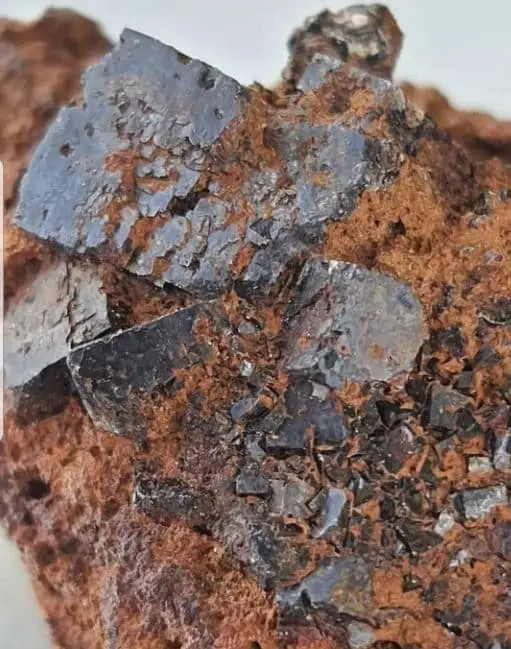
Metal ions bound to oxygen molecules form oxides. Rust, a compound of iron oxides (Fe2O3) and water is the oxide most people are acquainted with. Iron’s reaction to oxygen and water results in the formation of hydrated oxides. Iron oxides are required in the production of metallic iron. Iron oxide or iron ore, when melted, produces carbon dioxide (CO2) and metallic iron.
When rocks are red, it’s generally because iron oxides are present. Red sandstone, like that seen in Zion National Park and the rest of Southern Utah, is made up of white or colorless quartz grains cemented together by iron oxide.
Sulfates
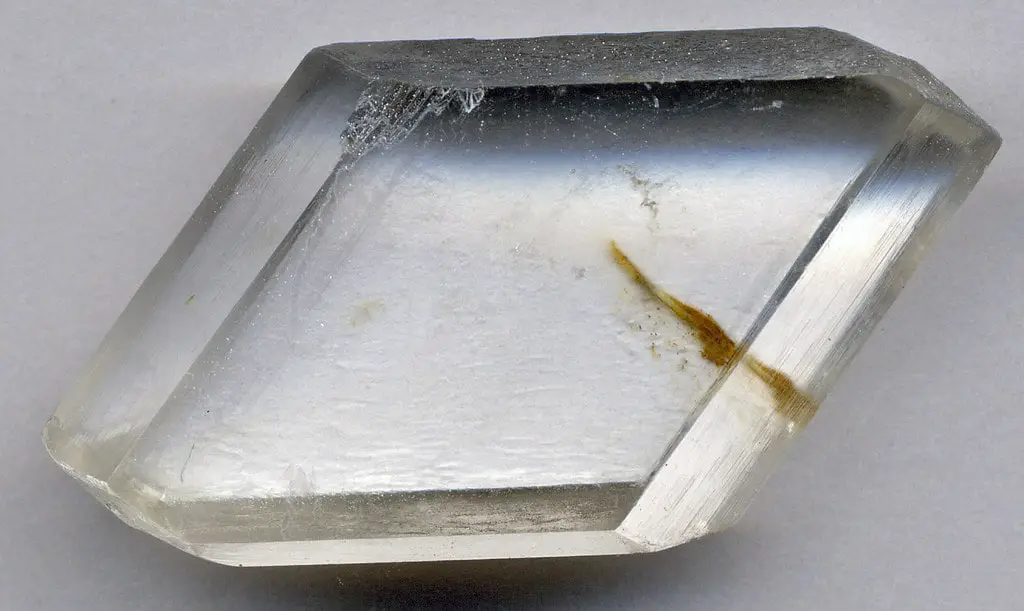
The sulfate ion is covalently bound to a metal ion, often calcium, in sulfate minerals. Combining sulfur and oxygen, the sulfate ion (SO4–2). Gypsum, a sulfate mineral with the chemical formula CaSO42H2O, is a key ingredient in many building supplies. Gypsum crystals often include water molecules since they are generated from evaporating water. In this formula, the 2H2O represents whole H2O molecules. In contrast to minerals like amphibole, which contain the water-derived hydroxide ion (OH-) without the accompanying hydrogen ion (H+), hydroxides do not include any other cations. Calcium sulfate devoid of water is a separate mineral from gypsum; it’s called anhydrite (CaSO4).
Sulfides
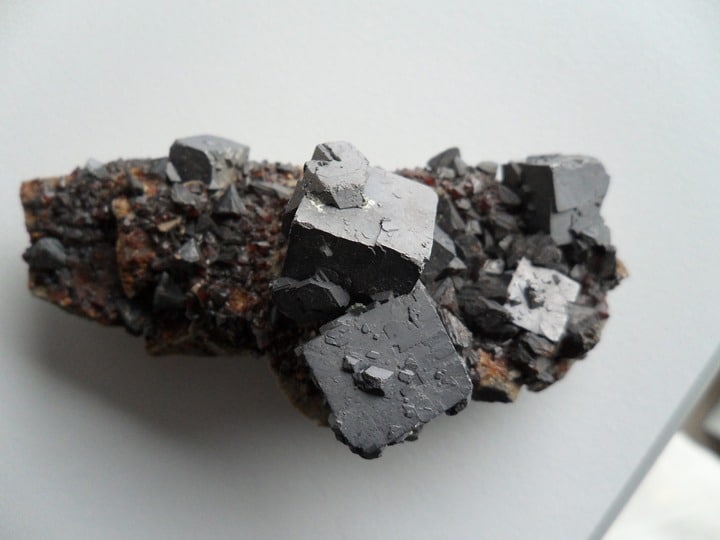
Sulfides, which include the chemical bonding of metals with sulfur, are a common type of ore for many metals. Galena (lead sulfide), sphalerite (zinc sulfide), pyrite (iron sulfide, sometimes known as “fool’s gold”), and chalcopyrite (copper sulfide) are all important examples (iron-copper sulfide). It is good knowledge that sulfides are useful as ore minerals. In porphyry deposits like the Bingham mine, galena, sphalerite, and chalcopyrite are the primary ores from which lead, zinc, and copper are extracted. Sulfides are also the primary ore of nickel, antimony, molybdenum, arsenic, and mercury.
Phosphates

Anions and cations are coupled with a tetrahedral phosphate unit (PO4-3) to form phosphate minerals. Phosphorus is sometimes replaced with arsenic or vanadium. Phosphates are used in a wide variety of consumer goods, from detergents and paint to fertilizers. Apatite, or Ca5(PO4)3(F,Cl,OH), is the most well-known phosphate mineral. It occurs naturally in teeth and bones. Turquoise is a copper-rich phosphate mineral (CuAl6(PO4)4(OH)84H2O), like gypsum, that also includes water molecules.
Hydroxides
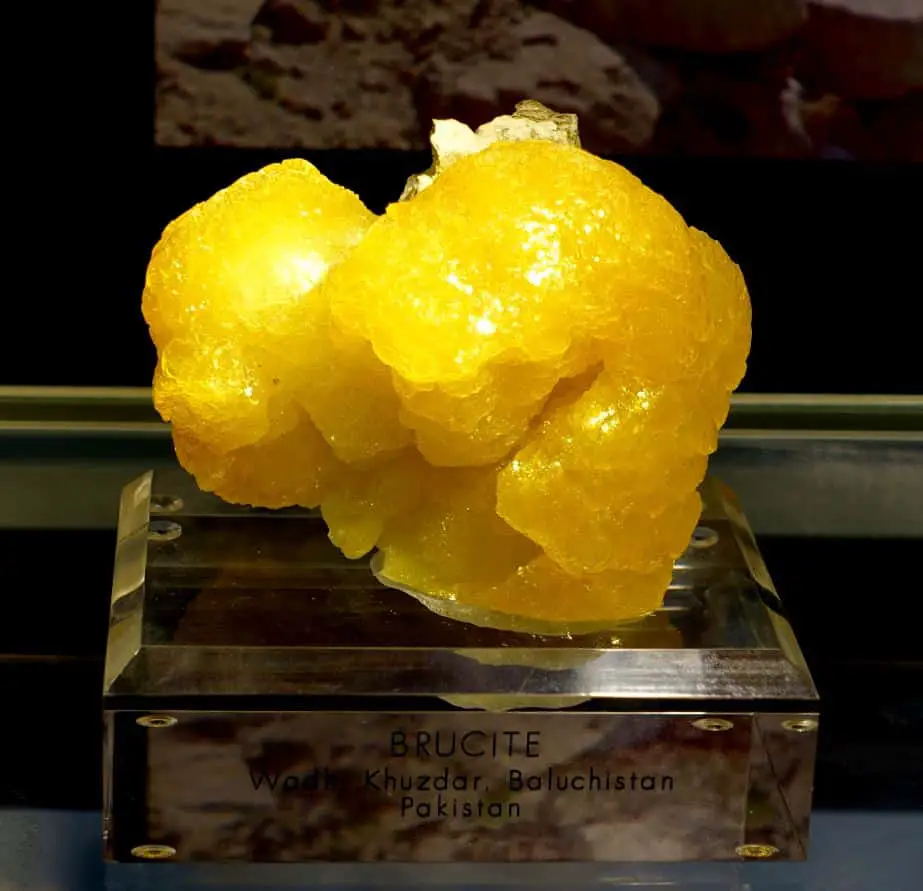
Any chemical molecule with one or more groups of oxygen and hydrogen atoms linked together to form the negatively charged ion OH-, is known as a hydroxide. The metal ion is often the positively charged part of the complex. Hydroxides are often seen in nature, and some examples are brucite, manganite, diaspore, and goethite.
Characteristics of nonsilicate minerals
The characteristics of non-silicate minerals can vary depending on their specific mineral group, but some general characteristics include:
- Chemical composition: Non-silicate minerals have a chemical composition that is different from silicate minerals. For example, carbonates are composed of carbon and oxygen, sulfates are composed of sulfur and oxygen, and halides are composed of a halogen and a metal.
- Crystal structure: Non-silicate minerals often have cubic, hexagonal, or trigonal crystal structures with high symmetry. This is because of the simple ionic bonding. For example, the mineral halite (sodium chloride) has a cubic crystal structure, while the mineral calcite (calcium carbonate) has a rhombohedral crystal structure.
- Color: Non-silicate minerals can come in a variety of colors, depending on their chemical composition and impurities. For example, the mineral hematite (iron oxide) can be red, brown, or black, while the mineral fluorite (calcium fluoride) can be purple, blue, green, or yellow.
- Luster: Non-silicate minerals can have a metallic or non-metallic luster, depending on their chemical composition and crystal structure. Metallic minerals, such as native copper and silver, have a shiny, metallic luster, while non-metallic minerals, such as calcite and halite, have a dull or glassy luster.
- Solubility: Some non-silicate minerals, such as halite and gypsum, are soluble in water, while others, such as hematite and magnetite, are not. This can affect their formation and distribution in the Earth’s crust.
- They are salts or metals. Many non-silicate minerals are salts such as halides (e.g. sodium chloride), sulfates (e.g. gypsum), carbonates (e.g. calcite), nitrates, etc. Some are pure elements such as metals (e.g. sodium, potassium, calcium, iron, etc.).
- Ionic bonds: The bonds between ions in non-silicate minerals are ionic bonds. The ions are held together by electrostatic attraction.
- Conduct electricity: When dissolved in water or molten, non-silicate minerals can conduct electricity as they contain free ions. Metals also conduct electricity intrinsically.
- High thermal conductivity: Non-silicate minerals, especially metals, tend to have high thermal conductivity due to the free flow of heat through the crystalline lattice.
- High melting and boiling points: The strong ionic or metallic bonds in non-silicate minerals require high energy to break, resulting in high melting and boiling points.
Difference between silicate and non-silicate minerals
On Earth, silicates predominate because of their abundance. The atoms of silicon and oxygen make up their structure. Located in group 14 of the periodic table, immediately below carbon, is the element silicon, which likewise has atomic number 14. Silicon may either gain a +4 charge as it loses four electrons to create a cation or give up these electrons to make four covalent bonds. Chemically, silicon in silicates forms a tetrahedral anion when it combines with four oxygen atoms. In chemistry, silicate is represented by the symbol SiO44-. There is a single covalent link between the core silicon atom and each oxygen atom, giving each oxygen atom a negative one charge. Having a negative charge allows them to combine with four different metal ions to create silicate minerals. If a metal ion isn’t available, silicon may pair up with another silicon atom to form the eighth member of the octet around the oxygen atom. Since one oxygen atom (bridging oxygen) may be shared between two silicon atoms to build continuous structures, the possibility of multiple silicate structures is not out of the question. The classification of silicate minerals is based on the degree of polymerization of their tetrahedral structure. Different kinds of silicates may be identified by the number of oxygen atoms they contain; examples include neosilicates (e.g., forsterite) and sorosilicates (e.g., epidote), cyclosilicates (e.g., beryl), inosilicates (e.g., tremolite), phyllosilicates (e.g., talc), and tecto (e.g. quartz).
These are rocks and minerals that don’t include silicates. Simply said, the silicate tetrahedral structure is not present in non-silicate materials. For this reason, their structure is simpler than that of silicate minerals. Six different types of minerals are not silicates. Six different types of inorganic compounds exist oxides, sulfides, carbonates, sulfates, halides, and phosphates. Only roughly 8 percent of these are present in the crust of the Earth. Although non-silicate minerals are not as commonly mined, they serve significant functions and are worth their weight in gold. Precious metals include things like gold, platinum, and silver. Non-silicate minerals include the illustrious diamond and ruby. Compounds of iron, aluminum, and lead with additional elements are common and have a wide range of applications.
Non-silicate minerals examples
- Carbonates: Calcite (CaCO3), dolomite (CaMg(CO3)2), and aragonite (CaCO3).
- Sulfates: Gypsum (CaSO4·2H2O), anhydrite (CaSO4), and celestine (SrSO4).
- Halides: Halite (NaCl), sylvite (KCl), and fluorite (CaF2).
- Oxides: Hematite (Fe2O3), magnetite (Fe3O4), and corundum (Al2O3).
- Sulfides: Pyrite (FeS2), galena (PbS), and chalcopyrite (CuFeS2).
- Native Elements: Gold (Au), silver (Ag), and copper (Cu).
- Phosphates: Apatite (Ca5(PO4)3(OH)), Phosphosiderite (NaCa2Fe3+2(PO4)2(OH)2•3H2O).
- Hydroxides: Brucite (Mg(OH)2), Boehmite (Al(OH)3), Diaspore (AlO(OH))
Non-silicate minerals important
Non-silicate minerals are a group of minerals that have a variety of important uses in various industries. Some of the most important uses of non-silicate minerals include:
- Construction: Non-silicate minerals such as halite, gypsum, and calcite are used in the construction industry as building materials, including as a component in wallboard, cement, and tiles.
- Jewelry and coins: Non-silicate minerals such as gold, silver, and copper have been used for centuries to make jewelry and coins. These metals are prized for their rarity and beauty, as well as their durability.
- Industrial minerals: Non-silicate minerals such as barite, hematite, and ilmenite are used as industrial minerals. Barite, for example, is used as a weighting agent in drilling fluids, while hematite is used as a source of iron for steel production.
- Electronics: Non-silicate minerals such as gallium, indium, and germanium are used in the electronics industry as components in transistors, diodes, and other electronic devices.
- Agriculture: Non-silicate minerals such as rock phosphate and apatite are used in agriculture as fertilizer. These minerals contain phosphorus, which is an essential nutrient for plant growth.
What uses are there for non-silicate minerals?
Several non-silicate minerals are important for various applications. Some of the most well-known non-silicate minerals include:
- Halite (salt): Halite, also known as common salt, is a mineral composed of the chemical element sodium chloride. It is widely used as a seasoning in food and has several industrial applications, including the production of chlorine and the de-icing of roads.
- Gypsum: Gypsum is a soft sulfate mineral that is used in the production of plaster, drywall, and other building materials.
- Sulfur: Sulfur is a chemical element that is found in various forms, including the mineral pyrite. It is used in the production of chemicals and fertilizers and has many other industrial applications.
- Diamond: Diamond is a form of the element carbon that is known for its hardness and clarity. It is used in jewelry and as an abrasive in industrial applications.
- Graphite: Graphite is a form of carbon that is used in the production of steel and as a lubricant. It is also used in the production of batteries and other industrial applications.
Overall, non-silicate minerals are an important part of our daily lives and are used in a wide variety of products and applications.
